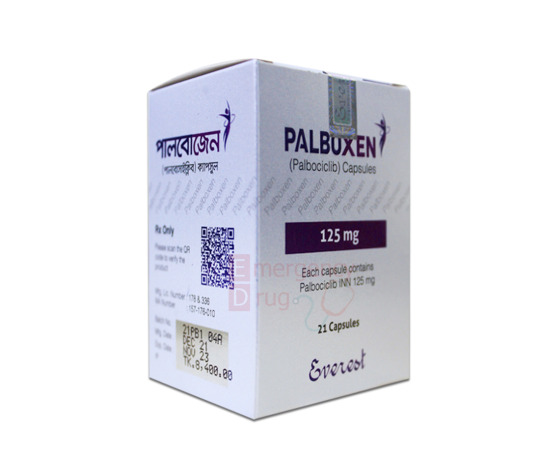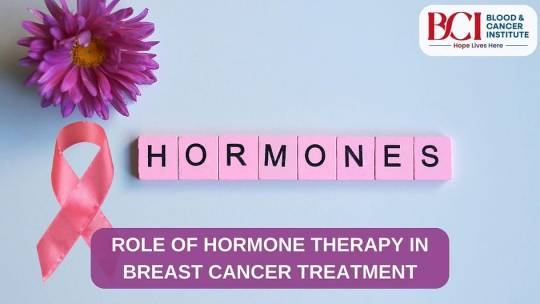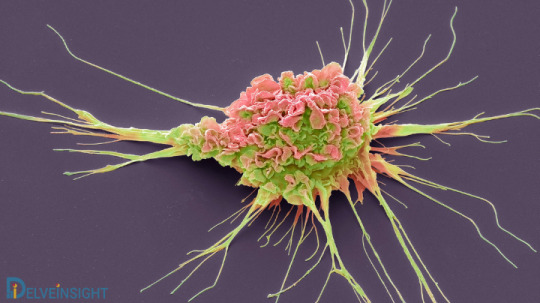#Fulvestrant
Explore tagged Tumblr posts
Text
#AdvancedBreastCancer#AstraZeneca#CancerDrugsFund#Capivasertib#Chemotherapy#Fulvestrant#HER2Negative#NICE#BreastCancer#HRPositiveHER2Negative#NewCancerDrugs#AKT1PIK3CAMutation#FulvestrantComboTherapy#KinaseInhibitor#AstraZenecaOncology
0 notes
Text
Imlunestrant: anticancro mammario biodisponibile per le forme HER2-negative
Secondo i risultati dello studio clinico di fase III EMBER-3 presentato questa settimana al San Antonio Breast Cancer Symposium (SABCS), il degradatore selettivo (SERD) sperimentale di nuova generazione imlunestrant, ha migliorato la sopravvivenza libera da progressione nei pazienti con carcinoma mammario avanzato pretrattato con terapia endocrina, ER-positivo, HER2-negativo, come monoterapia nei…
#abemaciclib#antiestrogens#carcinoma mammario#cellule tumorali#fulvestrant#imlunenstrant#SERDs#terapia endocrina#trial clinico
0 notes
Text
En el mes de la lucha contra el cáncer de mama, Cofepris aprueba nuevo tratamiento para esta enfermedad
La Comisión Federal para la Protección contra Riesgos Sanitarios (Cofepris) autorizó el registro sanitario de capivasertib, un medicamento que, en combinación con fulvestrant, se utiliza para tratar el cáncer de mama avanzado en personas adultas. Este fármaco contribuye a evitar la multiplicación de células cancerosas y está indicado en pacientes cuyo cáncer reapareció o empeoró durante o…
1 note
·
View note
Link
Faslodex in Cancer Treatment Faslodex, also known by its generic name fulvestrant, is a crucial medication in the fight against certain types of breast cancer. It belongs to a class of drugs called estrogen receptor antagonists. This means it works by blocking the effects of estrogen in the body, which is a hormone that can promote the growth of breast cancer cells. What is Faslodex? faslodex Faslodex functions by binding to the estrogen receptors in cancer cells, effectively neutralizing their ability to receive signals from estrogen. This action inhibits the growth of estrogen-dependent cancer cells, an essential factor in treating hormone receptor-positive breast cancer. Conditions Treated with Faslodex Faslodex is primarily used in the treatment of hormone receptor-positive breast cancer, specifically in postmenopausal women. It is typically recommended when other hormone therapies have proven ineffective. Benefits and Efficacy The efficacy of Faslodex in treating hormone receptor-positive breast cancer is well-documented. Here are some key benefits: Tumor Suppression: Faslodex effectively suppresses the growth of estrogen-dependent cancer cells, slowing down or halting the progression of the disease. Improved Survival Rates: Studies have shown that Faslodex can lead to increased survival rates in individuals with advanced breast cancer, offering hope and extended quality of life. Lower Recurrence Risk: When used as an adjuvant therapy, Faslodex reduces the risk of cancer recurrence, providing long-term protection. Manageable Side Effects: While side effects are possible, Faslodex is generally well-tolerated, and its benefits often outweigh any adverse effects. Administration and Dosage Faslodex is typically administered via intramuscular injection, most commonly into the buttocks. The frequency of injections may vary, but it is often administered once a month, under the supervision of a healthcare provider. Side Effects and Safety While Faslodex is generally well-tolerated, like any medication, it may come with potential side effects. Common side effects include: Injection site pain or discomfort Nausea Headache Hot flashes Weakness Joint pain Alternative Treatments While Faslodex is a vital component of breast cancer treatment, it's essential to be aware of complementary therapies and alternative treatments that may enhance overall well-being. These may include: Hormone Therapies: Other hormone therapies such as aromatase inhibitors or targeted therapies like CDK4/6 inhibitors may be considered in combination with Faslodex. Chemotherapy: In certain cases, chemotherapy may be recommended alongside Faslodex. Lifestyle Changes: A healthy lifestyle, including regular exercise and a balanced diet, can complement medical treatment and improve overall health. Supportive Therapies: Counseling, support groups, and integrative therapies like acupuncture or yoga can provide emotional and physical support during treatment. Future Developments Cancer research is a dynamic field, and ongoing studies aim to enhance the efficacy and accessibility of Faslodex and similar treatments. Stay informed about the latest developments in breast cancer research, including: Clinical Trials: Learn about ongoing clinical trials exploring new treatments and combinations involving Faslodex. Emerging Therapies: Discover potential breakthroughs in breast cancer therapies and how they may impact treatment strategies. Patient Advocacy: Explore opportunities to engage in patient advocacy and contribute to advancing breast cancer care. FAQs on the topic of "Faslodex": FAQ 1: What is Faslodex used for in cancer treatment? Answer: Faslodex is primarily used to treat hormone receptor-positive breast cancer, particularly in postmenopausal women. FAQ 2: How does Faslodex work in the body? Answer: Faslodex functions by binding to estrogen receptors in cancer cells, blocking their response to estrogen and inhibiting cell growth. FAQ 3: What are the benefits of Faslodex treatment? Answer: Faslodex offers benefits such as tumor suppression, increased survival rates, reduced recurrence risk, and manageable side effects in breast cancer care. FAQ 4: Are there any side effects associated with Faslodex? Answer: Common side effects of Faslodex may include injection site discomfort, nausea, headache, hot flashes, weakness, and joint pain. Severe side effects are rare but possible. FAQ 5: How is Faslodex administered to patients? Answer: Faslodex is typically administered via intramuscular injection, often once a month, under the supervision of a healthcare provider. FAQ 6: Are there alternative treatments to Faslodex for breast cancer? Answer: Yes, alternative treatments may include other hormone therapies, chemotherapy, lifestyle changes, and supportive therapies, depending on individual circumstances. FAQ 7: Can Faslodex be used in combination with other cancer treatments? Answer: In some cases, Faslodex may be used in combination with other therapies, such as aromatase inhibitors or targeted therapies, to enhance treatment outcomes. FAQ 8: What should patients expect during Faslodex treatment? Answer: Patients can expect ongoing monitoring, potential side effects, and regular discussions with their healthcare provider to assess treatment effectiveness. FAQ 9: Are there ongoing clinical trials involving Faslodex? Answer: Yes, there are clinical trials exploring new uses and combinations of Faslodex, offering opportunities for patients to participate in cutting-edge research. FAQ 10: How can patients stay informed about the latest developments in breast cancer care, including Faslodex? Answer: Patients can stay informed by following reputable cancer support organizations, clinical trials information, and educational breast cancer resources for updates and advocacy opportunities. Conclusion In this comprehensive guide, we've explored the critical role of Faslodex in the treatment of hormone receptor-positive breast cancer. From its mechanism of action to its benefits, dosage guidelines, and patient experiences, you now have a thorough understanding of this medication.
#Estrogen_receptor_positive_cancer#Faslodex#Faslodex_injection#Faslodex_medication#Fulvestrant#Fulvestrant_therapy#Fulvestrant_treatment#Hormone_receptor_antagonist#Hormone_receptor_positive_breast_cancer#Hormone_sensitive_breast_cancer#SERD_drug
0 notes
Text
AL VIA IL FARMACO CHE RADDOPPIA LA SOPRAVVIVENZA CON TUMORE AL SENO

All’Ospedale Sant’Andrea di Vercelli è stata avviata, per la prima volta in Italia, la cura del tumore al seno, attraverso l’impiego del Capivasertib, un farmaco che adotta un approccio completamente innovativo ed altamente efficace.
Questo farmaco definito “intelligente” rappresenta una novità nel trattamento del tumore metastatico al seno. “Questo approccio ci consente di personalizzare la cura per ogni paziente, migliorando significativamente le possibilità di successo terapeutico” spiega Chiara Saggia direttrice della struttura complessa di Oncologia dell’Asl Vercelli. Il trattamento è stato somministrato ad una paziente di 53 anni, residente nel Verbano, dopo la ripresa della malattia. Negli studi clinici, questo farmaco ha dimostrato di raddoppiare i benefici di sopravvivenza nelle pazienti con carcinoma mammario metastatico che presentano la mutazione PI3K, rispetto alla sola ormonoterapia.
La lotta contro il tumore al seno avanzato positivo ai recettori ormonali ha visto numerosi progressi negli ultimi anni. Tra questi, uno degli sviluppi più promettenti è l’uso di Capivasertib, un inibitore dell’AKT, in combinazione con Fulvestrant. Uno dei principali ostacoli nel trattamento del tumore al seno avanzato è la resistenza alla terapia endocrina. Questa resistenza è spesso mediata dall’attivazione della via dell’AKT, un meccanismo cellulare che promuove la sopravvivenza e la proliferazione delle cellule tumorali. Capivasertib agisce bloccando questo percorso, potenziando l’efficacia del Fulvestrant, un modulatore del recettore degli estrogeni utilizzato nel trattamento del tumore al seno avanzato.
Questo traguardo rappresenta una nuova frontiera per le donne affette da carcinoma mammario metastatico che rappresenta oltre il 60% dei casi di tumore al seno.
___________________
Fonte: Chiara Saggia; foto di Thirdman

VERIFICATO ALLA FONTE Guarda il protocollo di Fact checking delle notizie di Mezzopieno
BUONE NOTIZIE CAMBIANO IL MONDO Firma la petizione per avere più informazione positiva in giornali e telegiornali

Se trovi utile il nostro lavoro e credi nel principio del giornalismo costruttivo non-profit | sostieni Mezzopieno
16 notes
·
View notes
Text
Palbociclib 125 mg: A Key Drug in Breast Cancer Treatment
Palbociclib 125 mg is a prescription medicinal drug used inside the remedy of certain types of breast most cancers. It belongs to a category of medicine called CDK4/6 inhibitors, which paintings via slowing down the boom of cancer cells. When used in mixture with hormonal healing procedures, Palbociclib can considerably enhance effects in patients with superior or metastatic breast most cancers.
What is Palbociclib?
Palbociclib is an oral cancer medicine advanced to deal with hormone receptor-advantageous (HR+), human epidermal boom aspect receptor 2-terrible (HER2-) breast most cancers. This sort of breast cancer relies upon on hormones like estrogen to grow. Palbociclib works by way of blocking off proteins (CDK4 and CDK6) which might be answerable for cell division, hence stopping most cancers cells from multiplying.
Uses of Palbociclib one hundred twenty five mg
Palbociclib is specially used to treat:
Advanced or metastatic HR+/HER2- breast cancer in mixture with:
Letrozole, for postmenopausal women as first-line hormonal-based remedy.
Fulvestrant, for sufferers whose ailment has improved after previous hormonal remedy.
This mixture facilitates amplify the time before the cancer worsens and improves progression-unfastened survival.
Dosage and Administration
The typical dose of Palbociclib is 125 mg taken once day by day for 21 consecutive days, accompanied by using 7 days off (a 28-day remedy cycle).
It should be all in favour of food, on the identical time each day.
The dose can be adjusted primarily based on how well the patient tolerates the drug.
Always observe the prescribing doctor’s instructions, as wrong dosing can lead to serious side consequences.
Possible Side Effects
Like all most cancers capsules, Palbociclib may additionally purpose side outcomes. Common ones consist of:
Fatigue
Nausea
Diarrhea or constipation
Loss of urge for food
Hair thinning
Low white blood mobile depend (neutropenia)
Serious Side Effects
Severe infections (due to low immunity)
Lung infection (rare however critical)
Liver troubles
Regular blood tests are required to reveal blood counts and liver feature while on this medicine.
Precautions and Warnings
Before beginning Palbociclib, sufferers have to inform their physician in the event that they:
Have liver or kidney troubles
Are pregnant or breastfeeding
Take another medications (inclusive of natural or over the counter drugs)
Have low blood cellular counts
Pregnancy Warning
Palbociclib can damage an unborn baby. Effective birth control is essential in the course of treatment and for at the least three weeks after the remaining dose.
Drug Interactions
Palbociclib can have interaction with different medicines, especially those that have an effect on liver enzymes (like CYP3A inhibitors or inducers). Drugs consisting of ketoconazole, rifampin, or St. John's wort can also trade how Palbociclib works, so your doctor ought to evaluation all of your medicines.
Conclusion
Palbociclib one hundred twenty five mg has transformed the way superior breast cancer is handled, offering desire for sufferers with HR+/HER2- breast cancer. When used along hormone therapy, it could help put off ailment progression and enhance pleasant of existence. However, it ought to be used below strict medical supervision because of potential side consequences and the want for everyday monitoring.
0 notes
Text
0 notes
Text
Palbociclib: A Comprehensive Guide to Uses, Dosage, Side Effects & More
Palbociclib
Summary
Palbociclib (brand names: Ibrance, Palbonix, Palboxen, Palbocent) is an oral CDK4/6 inhibitor used to treat hormone receptor-positive (HR+), HER2-negative advanced or metastatic breast cancer. It works by blocking proteins that promote cancer cell growth, slowing tumor progression.
Available in 100mg and 125mg capsules, Palbociclib is typically combined with aromatase inhibitors (letrozole, anastrozole) or fulvestrant for better efficacy. Common side effects include neutropenia, fatigue, nausea, and diarrhea.
This guide covers how Palbociclib works, dosage, side effects, drug interactions, safety precautions, and alternative brands to help patients and caregivers make informed decisions.
Introduction
Breast cancer remains one of the most prevalent cancers worldwide, with HR+/HER2- subtypes accounting for ~70% of cases. For patients with advanced or metastatic disease, Palbociclib has emerged as a breakthrough targeted therapy, significantly improving progression-free survival.
But how does it work? What are the side effects? And how long does it take to show results? This guide answers all key questions, ensuring you have accurate, up-to-date, and actionable information.
What is Palbociclib?
Palbociclib is a cyclin-dependent kinase (CDK) 4/6 inhibitor—a type of targeted cancer therapy. It blocks CDK4 and CDK6 proteins, which play a crucial role in cell division and cancer growth.
Key Facts:
Brand Names: Ibrance, Palbonix, Palboxen, Palbocent
Generic Availability: Yes (more affordable options available)
FDA Approval: 2015 for metastatic breast cancer 314
Therapeutic Class: Antineoplastic, Kinase Inhibitor

How Does Palbociclib Work? (Mechanism of Action)
Palbociclib targets CDK4/6, proteins that help cancer cells divide uncontrollably. By inhibiting these kinases: ✅ Slows cancer cell proliferation ✅ Delays tumor growth ✅ Enhances effectiveness of hormonal therapy
Why Combine with Aromatase Inhibitors?
Letrozole/Anastrozole reduce estrogen production.
Fulvestrant blocks estrogen receptors.
Palbociclib enhances their effect by preventing cancer cells from bypassing hormonal blockade 714.
Palbociclib FDA Approval & Prescribing Information
First approved in 2015 for HR+/HER2- metastatic breast cancer 14.
Standard dose: 125mg once daily for 21 days, followed by a 7-day break (28-day cycle).
Lower dose (100mg or 75mg) may be used if severe side effects occur 7.
Palbociclib Uses & Indications
Approved Uses:
✔ First-line therapy (with an aromatase inhibitor) for postmenopausal women/men with HR+/HER2- metastatic breast cancer. ✔ Second-line therapy (with fulvestrant) for patients whose cancer progressed after hormonal therapy 14.
Off-Label Uses (Under Research):
Liposarcoma
Glioblastoma
Other CDK4/6-dependent cancers
Dosage & Administration
Dosage FormStrengthRegimenPalbonix 125mg125mg21 days on, 7 days offPalbonix 100mg100mgAdjusted for toxicityPalboxen 125mg125mgWith food (capsules)
Key Notes:
Take with or without food (tablets) / with food (capsules).
Do not crush or chew—swallow whole.
If vomiting occurs, skip the dose—do not double dose 7.

Available Brands & Prices
BrandStrengthPrice (21 Capsules)Palbonix 125mg125mg~$310Palbonix 100mg100mg~$215Palboxen 125mg125mg~$70Palbocent 125mg125mg~$80
(Prices may vary based on location and pharmacy.)
Side Effects of Palbociclib
Common Side Effects:
Neutropenia (low white blood cells) – Most frequent 14.
Fatigue
Nausea & Diarrhea
Mouth sores
Serious Side Effects (Seek Medical Help):
⚠ Severe infections ⚠ Lung inflammation (pneumonitis) ⚠ Liver toxicity

Drug Interactions & Precautions
Avoid These While Taking Palbociclib:
❌ Grapefruit (increases drug levels) ❌ Strong CYP3A inhibitors (ketoconazole, clarithromycin) ❌ Live vaccines (weakened immune system)
Precautions:
✔ Regular blood tests (monitor neutrophils). ✔ Avoid pregnancy (can harm fetus).
Pregnancy, Lactation & Pediatric Use
Pregnancy: Contraindicated (risk of fetal harm).
Breastfeeding: Not recommended (unknown if excreted in milk).
Pediatric Use: Not approved for children 14.
Safety Advice
Alcohol: May worsen fatigue.
Driving: Dizziness possible—use caution.
Kidney/Liver Impairment: Dose adjustments may be needed.
Storage Conditions
Room temperature (20°C–25°C).
Keep in original packaging.

What If You Miss a Dose?
Skip the missed dose.
Do NOT take extra to compensate.
Conclusion
Palbociclib is a game-changer for HR+/HER2- breast cancer, improving survival rates. While side effects like neutropenia are common, proper monitoring ensures safe and effective treatment.
For cost-effective options, generic Palbociclib (Palbonix, Palboxen, Palbocent) are available. Always consult your oncologist before making changes to your regimen.
FAQs (People Also Ask)
1. How long does Palbociclib take to work?
Most patients see tumor stabilization within 2-3 months, but individual responses vary.
2. What is the success rate of Palbociclib?
Studies show it extends progression-free survival by ~10-24 months when combined with hormonal therapy.
3. Can Palbociclib cure breast cancer?
No, but it effectively controls advanced/metastatic disease, improving quality of life.
4. Does Palbociclib cause hair loss?
Mild hair thinning may occur, but not severe alopecia like chemotherapy.
5. What is the best time to take Palbociclib?
Morning doses are common, but consistency (same time daily) matters most.
#emergencydrug#palbociclib#palboxen 125mg#Palbonix 125mg#Palbonix 100mg#Palbocent 125mg#Palbociclib side effects#Palbociclib prices#Palbociclib cost#Palbociclib medicines
0 notes
Text
0 notes
Text
The Role of Hormone Therapy in Breast Cancer Treatment Explained By The Breast Cancer Specialist In Surat

Breast cancer remains one of the most prevalent forms of cancer affecting women worldwide. As medical science advances, treatment options continue to evolve, offering patients better chances of survival and improved quality of life. Among these treatment modalities, hormone therapy has emerged as a crucial component in the fight against breast cancer. This blog post from our breast cancer specialists in Surat at BCI- Blood and Cancer Institute, is about the significant role that hormone therapy plays in breast cancer treatment, exploring its mechanisms, applications, and impact on patient outcomes.
Understanding Hormone-Responsive Breast Cancer
Not all breast cancers are the same. A significant proportion of breast cancers are hormone-responsive, meaning their growth is fueled by hormones such as estrogen and progesterone. These cancers are often referred to as estrogen receptor-positive (ER+) or progesterone receptor-positive (PR+) breast cancers.
In hormone-responsive breast cancers, the cancer cells have receptors that bind to estrogen or progesterone, stimulating their growth and proliferation. Cancer specialists in Surat, and worldwide, use this understanding for targeted treatments that aim to disrupt this hormone-dependent growth cycle.
The Mechanism of Hormone Therapy
Hormone therapy, also known as endocrine therapy, works by interfering with the body’s hormone production or by blocking the effects of hormones on breast cancer cells. The primary goal is to deprive the cancer cells of the hormones they need to grow and spread. This can be achieved through various approaches:
Selective Estrogen Receptor Modulators (SERMs): These drugs, such as tamoxifen, work by binding to estrogen receptors in breast tissue, effectively blocking estrogen from attaching to these receptors.
Aromatase Inhibitors (AIs): In postmenopausal women, AIs like letrozole, anastrozole, and exemestane work by reducing the amount of estrogen produced in the body by blocking the enzyme aromatase, which is responsible for converting androgens into estrogen.
Estrogen Receptor Downregulators: Drugs like fulvestrant not only block estrogen receptors but also cause the receptors to be destroyed, further reducing the cancer cells’ ability to respond to estrogen.
Ovarian Suppression: In premenopausal women, medications or surgical procedures can be used to stop the ovaries from producing hormones, effectively inducing menopause.
Applications of Hormone Therapy
Hormone therapy finds application at various stages of breast cancer treatment in Surat:
Adjuvant Therapy: After primary treatments like surgery, radiation, or chemotherapy, hormone therapy is often prescribed to reduce the risk of cancer recurrence. This can be a long-term treatment, often lasting 5–10 years.
Neoadjuvant Therapy: In some cases, hormone therapy may be used before surgery to shrink tumors, making them easier to remove and potentially allowing for breast-conserving surgery.
Metastatic Breast Cancer Treatment: For patients with advanced or metastatic hormone-responsive breast cancer, hormone therapy can be an effective way to control the disease, often with fewer side effects than traditional chemotherapy.
Preventive Therapy: In high-risk individuals, certain hormone therapies have shown promise in reducing the risk of developing breast cancer.
Benefits and Considerations
The benefits of hormone therapy in breast cancer treatment are substantial:
● Improved Survival Rates: Studies have shown that hormone therapy can significantly reduce the risk of cancer recurrence and improve overall survival rates in patients with hormone-responsive breast cancers.
● Quality of Life: Compared to chemotherapy, hormone therapy often has fewer and less severe side effects, allowing patients to maintain a better quality of life during treatment.
● Long-term Protection: The protective effects of hormone therapy can extend for many years after the completion of treatment.
However, it’s important to consider that hormone therapy is not without its challenges:
● Side Effects: While generally milder than chemotherapy, hormone therapy can cause side effects such as hot flashes, joint pain, and increased risk of osteoporosis.
● Resistance: Some cancers may develop resistance to hormone therapy over time, necessitating changes in treatment approach.
● Patient Adherence: The long-term nature of hormone therapy can be challenging for some patients, affecting adherence to treatment plans.
Personalized Approach
According to the experts of Blood and Cancer Institute, one of the best cancer hospitals in Surat, the field of breast cancer treatment is moving towards increasingly personalized approaches. Factors such as the specific type of breast cancer, the patient’s menopausal status, and individual risk factors all play a role in determining the most appropriate hormone therapy regimen.
Genomic testing has further refined this approach, allowing oncologists to identify patients who are most likely to benefit from hormone therapy and those who might safely forego it, avoiding unnecessary treatment and potential side effects.
Conclusion
Hormone therapy has revolutionized the treatment of hormone-responsive breast cancers, offering patients a targeted, effective, and often less toxic treatment option. As research continues, we can expect further refinements in hormone therapy approaches, leading to even better outcomes for breast cancer patients.
The role of hormone therapy in breast cancer treatment underscores the importance of personalized medicine and the power of understanding the underlying biology of cancer. As we continue to unravel the complexities of breast cancer, hormone therapy stands as a testament to the progress made in cancer treatment and the hope it brings to millions of patients worldwide.
0 notes
Text
Market Insights into HR-positive/HER2-negative Breast Cancer: Future Therapies Shaping the Landscape

Introduction
HR-positive/HER2-negative breast cancer is the most prevalent subtype of breast cancer, representing approximately 70% of all cases. Characterized by the presence of hormone receptors and the absence of the HER2 protein, this subtype typically responds well to hormone therapies. However, challenges remain, particularly concerning treatment resistance and recurrence. With ongoing advancements in targeted therapies, the treatment landscape for HR-positive/HER2-negative breast cancer is evolving rapidly, offering hope for improved patient outcomes and quality of life.
Current Landscape of HR-positive/HER2-negative Breast Cancer Treatment
The management of HR-positive/HER2-negative breast cancer has traditionally relied on hormone-based therapies aimed at inhibiting estrogen's effect on tumor growth. Common treatments include:
Tamoxifen: A selective estrogen receptor modulator (SERM) used mainly in premenopausal women.
Aromatase Inhibitors: Such as letrozole and anastrozole, which reduce estrogen production in postmenopausal women.
Fulvestrant: A selective estrogen receptor degrader (SERD) that downregulates estrogen receptors.
Despite their effectiveness, many patients experience disease recurrence, prompting researchers to explore new therapeutic options that can address resistance mechanisms and enhance treatment efficacy.
Emerging Therapies Transforming the Market
The HR-positive/HER2-negative breast cancer market is witnessing a wave of innovative therapies that aim to improve patient outcomes. Key emerging therapies include:
1. CDK4/6 Inhibitors
Examples: Palbociclib, ribociclib, abemaciclib.
Mechanism: These drugs inhibit cyclin-dependent kinases 4 and 6, proteins critical for cell division. In clinical trials, CDK4/6 inhibitors combined with endocrine therapy have demonstrated significant improvements in progression-free survival for patients with advanced HR-positive breast cancer.
Market Impact: The integration of these inhibitors into treatment regimens has reshaped standard care for metastatic HR-positive breast cancer, leading to increased demand and growth in this segment of the market.
2. PI3K Inhibitors
Example: Alpelisib.
Mechanism: Targeting the PI3K/AKT/mTOR signaling pathway, which is often activated in HR-positive tumors, alpelisib has been approved for use in combination with endocrine therapy for patients with PIK3CA-mutated tumors. This targeted approach addresses specific genetic alterations that contribute to treatment resistance.
Market Potential: As genetic profiling becomes more common in clinical practice, the demand for PI3K inhibitors is expected to rise, offering personalized treatment options for patients.
3. Next-Generation SERDs
Example: Elacestrant.
Mechanism: Next-generation SERDs are designed to more effectively degrade estrogen receptors and block estrogen's proliferative effects. These oral agents provide a more convenient alternative to intramuscular fulvestrant.
Market Growth: As clinical trials continue to show efficacy, next-generation SERDs may become a preferred option in the treatment of HR-positive breast cancer, expanding their market share.
4. BCL-2 Inhibitors
Example: Venetoclax.
Mechanism: BCL-2 inhibitors induce apoptosis in cancer cells by inhibiting proteins that prevent cell death. Early studies suggest that combining venetoclax with hormonal therapies may enhance treatment effectiveness, particularly in cases of resistant disease.
Emerging Role: The potential for BCL-2 inhibitors to improve outcomes in HR-positive/HER2-negative breast cancer could contribute significantly to market expansion.
5. Combination Therapies
Trend: The future of HR-positive/HER2-negative breast cancer treatment is increasingly focused on combination therapies that leverage the strengths of multiple agents. Pairing CDK4/6 inhibitors with aromatase inhibitors or other targeted therapies can provide a more robust approach to combating resistant disease.
Market Outlook: The trend toward combination therapies is likely to drive innovation and growth in the HR-positive/HER2-negative breast cancer market, as new treatment regimens are developed and tested.
The Role of Biomarkers and Personalized Medicine
As understanding of tumor biology advances, the importance of biomarkers in tailoring treatment strategies is becoming clear. Identifying genetic mutations and alterations, such as PIK3CA or ESR1 mutations, enables healthcare providers to select therapies that align with the unique characteristics of each patient’s cancer. This personalized approach is expected to improve treatment efficacy and reduce unnecessary side effects.
Market Challenges and Considerations
Despite the promising developments, the HR-positive/HER2-negative breast cancer market faces several challenges:
Drug Resistance: Ongoing resistance to current therapies remains a critical concern, necessitating the development of novel agents that can overcome this barrier.
Cost of Treatment: New therapies often come with high price tags, limiting accessibility for some patients and posing challenges for healthcare systems.
Clinical Trials and Approvals: Continuous research and clinical trials are essential to bring new treatments to market, ensuring they are safe and effective for patients.
Conclusion: The Future of HR-positive/HER2-negative Breast Cancer Treatment
The landscape of HR-positive/HER2-negative breast cancer treatment is rapidly evolving, with a host of emerging therapies poised to reshape care. As new drugs enter the market and personalized medicine continues to gain traction, patients can look forward to improved treatment options and outcomes. Continued investment in research and development, along with the integration of advanced technologies for biomarker identification, will be crucial in driving future growth in this dynamic market.
Latest Reports
Head And Neck Squamous Cell Carcinoma Market | Radioligand Therapies Market | Surgical Site Infections Market | Wound Closure Devices Market | Biliary Atresia Market | Binge Eating Disorder Market | Bladder Cancer Market | Capnography Device Market | Cardiac Biomarkers Testing Devices Market | Central Venous Catheters Market | Epilepsy Market | Gaucher Disease Market | Generalized Pustular Psoriasis Market | Healthcare Due Diligence Services | Hemodynamic Monitoring Systems Market | Implantable Infusion Pumps Market | Neuromodulation Devices Market | Neurostimulation Devices Market | Neurotrophic Keratitis Market | Post Traumatic Stress Disorder Market | Post-bariatric Hypoglycemia Market | Absssi Market | Acute Gout Flare Market | Adrenoleukodystrophy Market | Adult Myopia Market | Alopecia Areata Market | Alpha-mannosidosis Market | Androgenetic Alopecia Market | Anemia In Ckd Market | Anterior Cruciate Ligament Injuries Market | Artificial Lung Devices Market | Automated External Defibrillators Market | Biochips Market | Cardiac Amyloidosis Market | Carpal Tunnel Syndrome Market | Centronuclear Myopathy Market | Chronic Rhinosinustis Market
#Breast Cancer#Breast Cancer Market#Breast Cancer Forecast#Breast Cancer Companies#Breast Cancer Drugs#Breast Cancer Therapies#Breast Cancer Epidemiology#Breast Cancer Pipeline#Breast Cancer Market Size#Breast Cancer Market Trends
0 notes
Text
Palbociclib can interact with other medications, potentially affecting its efficacy or safety. For instance, strong CYP3A inhibitors and inducers can alter palbociclib 125 mg price and drug levels in the body and should be used cautiously. Additionally, medications that elevate gastric pH may reduce Palbociclib’s effectiveness. However, no significant interactions have been observed with drugs like letrozole, fulvestrant, or goserelin. Proper understanding of these interactions is vital for safe treatment. For detailed information on drug interactions and pricing, feel free to contact us via Call/WhatsApp: +91 8130290915.
0 notes
Text
Ribociclib Kisqali Medication uses, side effects & Lowest cost

Ribociclib is used in combination with another medication to treat a certain type of hormone receptor– positive (depends on hormones such as estrogen to grow) advanced breast cancer or that has spread to other parts of the body in women who have not experienced menopause (change of life; end of monthly menstrual periods) and in those who are close to or who have already experienced menopause. Ribociclib is also used in combination with fulvestrant (Faslodex) to treat a certain type of hormone receptor–positive advanced breast cancer or that has spread to other parts of the body as an initial treatment or in people who have not been treated successfully with other treatments in women who have already experienced menopause.
How should this medicine be used?
Ribociclib comes as a tablet to take by mouth. It is usually taken with or without food once daily in the morning for the first 21 days of a 28-day cycle. Take ribociclib at around the same time every day.
What side effects can this medication cause?
Ribociclib may cause side effects. Tell your doctor if any of these symptoms are severe or do not go away: diarrhea constipation, stomach pain, headache, hair loss, back pain itching, mouth sores, swelling of the hands, feet, ankles, or lower legs difficulty falling asleep or staying asleep
Above content source: https://www.911globalmeds.com/info/213-1-Ribociclib-Kisqali-Kryxana-Medication-Patient-Information-In-English.pdf
The guaranteed Lowest Cost of Ribociclib / Kisqali 200 mg @ $34.05 and $6.50 per Tablet Online.
Above Price source:
0 notes
Text
FDA Memberikan Peninjauan Prioritas untuk Inavolisib dalam Pengobatan Kanker Payudara dengan Mutasi PIK3CA
Majalah Farmasetika – Peninjauan prioritas inavolisib adalah untuk pengobatan pasien dengan kanker payudara lanjut yang reseptor hormonnya positif, HER2-negatif dengan mutasi PIK3CA. FDA telah memberikan peninjauan prioritas untuk inavolisib (GDC-0077; Roche) dalam kombinasi dengan palbociclib (Ibrance; Pfizer) dan fulvestrant (Faslodex; AstraZeneca), mempercepat aksesibilitas bagi pasien yang…

View On WordPress
0 notes
Text
0 notes